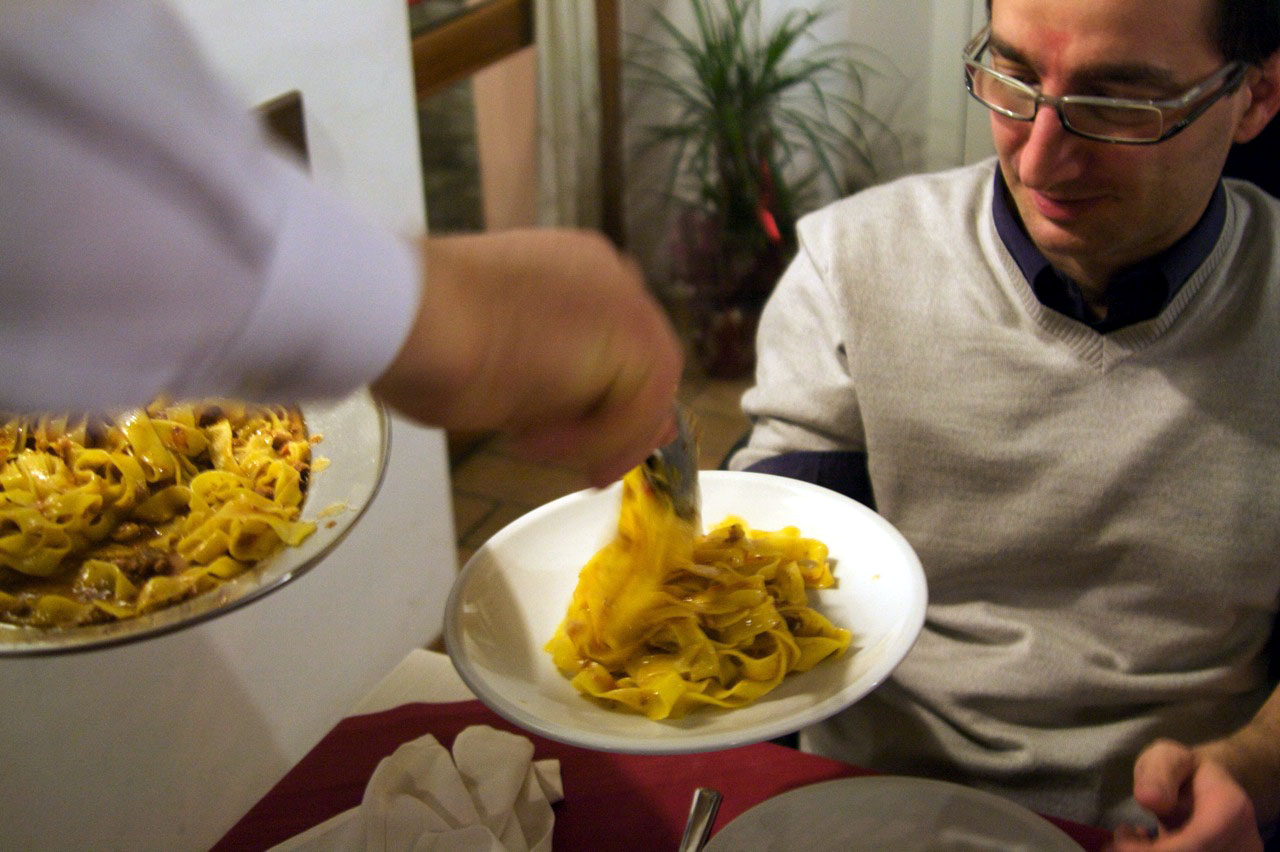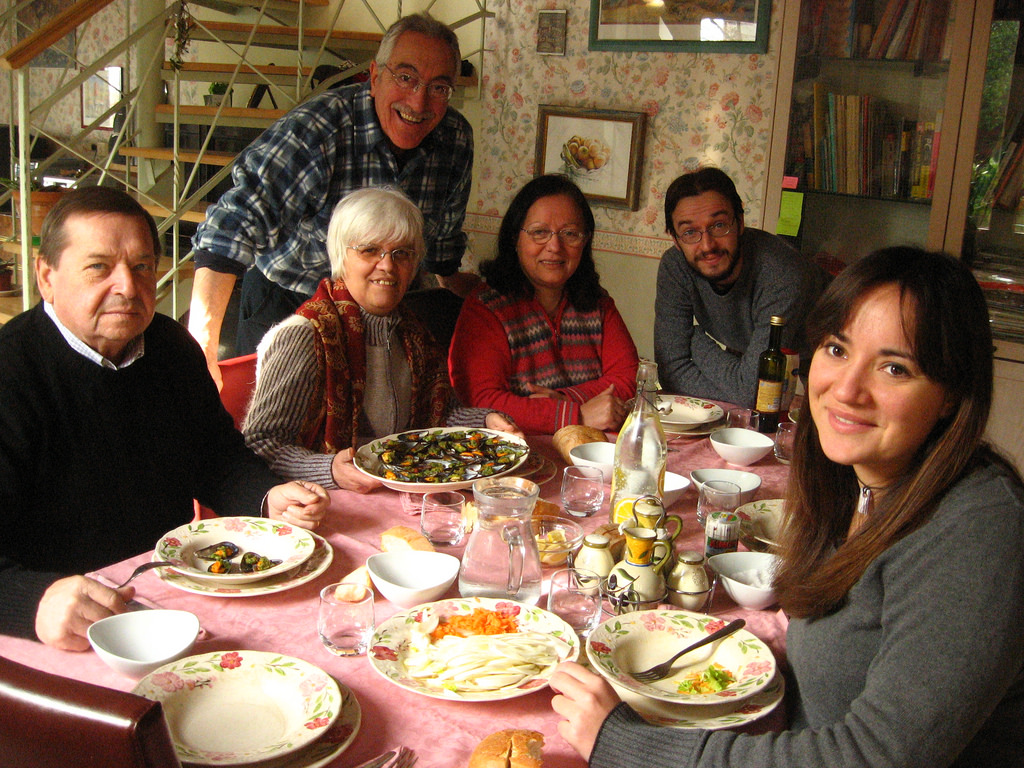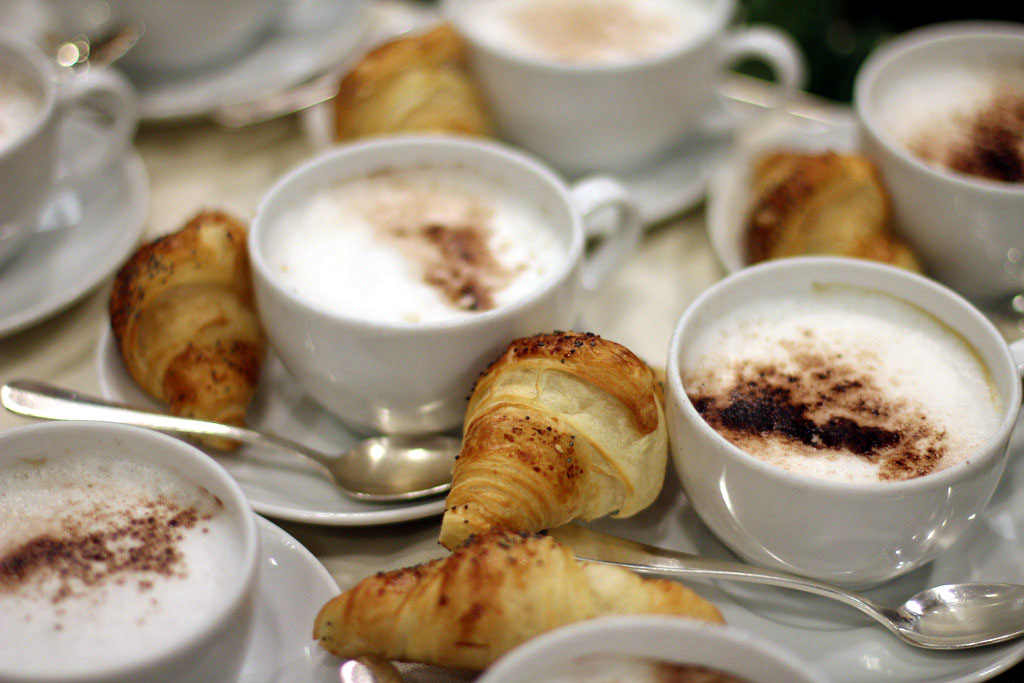Food and Drink: Daily Meals
Breakfast
Italians start the day with colazione, typically coffee and a light snack. In the home, Italians drink espresso and eat biscotti or fruit. Many Italians consume breakfast in cafés al banco, standing at the bar. More elaborate cappuccinos, caffe lattes, and cornetto pastries are available in cafés. Italians drink milky coffee in the morning only, with the belief that dairy inhibits digestion later in the day.
Lunch
At around one o’clock in the afternoon, Italians eat what is typically the largest meal of the day, pranzo. It is common to return home to eat a leisurely two-hour lunch. Lunches in Italy normally consist of three courses: pasta or risotto; meat, fish, or vegetables; and fruit.
Dinner
The last meal of the day, cena, is eaten between 7 and 10pm. Although it consists of multiple courses, as with lunch, dinner is usually a light meal of soup, salad, and leftovers.
Snack
Eating a mid-afternoon snack, usually after work or school, is common in Italy. Called merenda, a snack can include an espresso with gelato, yogurt, cookies, fruit, or a small panino.
Sweets
Fresh fruit is often eaten at the end of a meal, although cake is also enjoyed. Gelato is a popular treat, typically found in a specialty shop called a gelateria. Cannoli and other sweet pastries are available in bakeries and cafés.
Article written for World Trade Press by Christine Kiilerich.
Copyright © 1993—2025 World Trade Press. All rights reserved.

 Italy
Italy 


